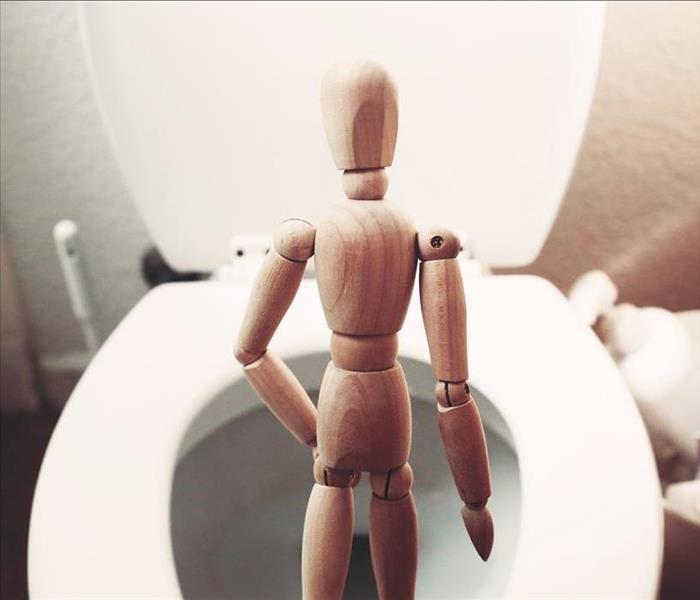Water Damage After a Toilet Overflow? Here's What To Do
8/7/2020 (Permalink)
It’s safe to say that a toilet overflow is the last thing that anyone wants in their home. With an overflow comes a mess to clean up and a risk for water damage. The bathroom floor and other nearby surfaces are not the only areas that can experience damage from a toilet overflow, as leaking water may seep down into the ceiling below. In order to protect your home from the unpleasant and potentially devastating effects of a toilet overflow, it is important to learn about what causes toilets to overflow and what to do if a toilet overflows in your home.
What Causes a Toilet Overflow?
There’s no one, specific reason why toilets overflow. Instead, overflows can arise from a variety of complications. However, three instances that commonly cause toilet overflows include a blocked vent pipe, a clogged drain, and sewage complications.
Each time a toilet is flush, external air is needed, which is transported in via the vent pipe. An overflow can occur if the vent pipe becomes blocked, which hinders the toilet’s ability to flush properly. Unfortunately, a blocked vent pipe isn’t a quick fix and the help of an expert plumber will most likely be needed.
Another catalyst of toilet overflows is a clogged drain. When the toilet drain is clogged, water and waste cannot flush correctly, which increases the risk of an overflow. The good news is that this issue can usually be solved by plunging the toilet yourself.
Lastly, two different complications involving sewage systems, a clogged sewer line and a full septic tank, can cause your toilet to overflow. A sewer line can be blocked by debris, tree roots, and sanitary materials. When this happens, your home can be at risk for not just a toilet overflow, but for additional serious damage as well, which can require professional help. Some homes use septic tanks, which collect waste and release excess water into the ground. When a septic tank is full, water cannot be released and moves back up into your home, which has the potential of resulting in an overflow. This is why it is beneficial to have tanks emptied and replaced on a regular basis.
How to Clean Up
Your reaction upon first seeing a toilet overflow in your bathroom may be “oh no!” or “ugh why?”, but immediately after assessing the situation, it is important to take action right away. First, turn off the water and make sure that the overflow has stopped. The next highest priority should be to quickly clean up all standing water by using a wet vacuum, mop, or towels. If water is left sitting on a surface, your bathroom will be at risk for water damage and mold growth. Next, dry out the area to the best of your ability using a high-powered fan or opening windows. This will also help to prevent mold growth and water damage. Finally, be sure to thoroughly clean and disinfect the bathroom.
We’re Water Damage Specialists
Water damage due to a toilet overflow can be minimized if you catch it right away, stop it quickly, and know how to properly clean up. However, it is possible that they may occur when no one is home, causing water from the overflow to damage surfaces. Remember that here at SERVPRO of Metro Pittsburgh East, we are water damage specialists. Our experienced team will work quickly to get your bathroom back in shape, making it “like it never even happened.” Learn more about our water damage services by clicking here.




 24/7 Emergency Service
24/7 Emergency Service
